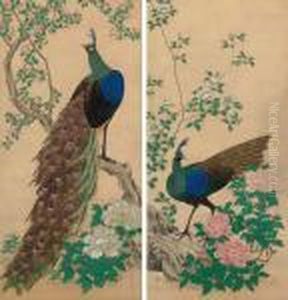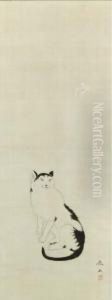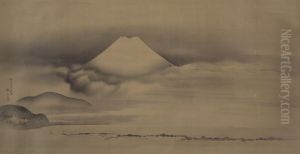Mori Tetsuzan Paintings
Mori Tetsuzan, also known as Mori Shunkei, was a prominent Japanese painter born in the mid-Edo period. He was the second son of Mori Sosen, who was an acclaimed painter famous for his depictions of monkeys. Tetsuzan inherited his father's artistic skills and developed his style, becoming a well-known artist in his own right.
Tetsuzan's works were characterized by their delicate and refined nature, often focusing on traditional Japanese subjects such as landscapes, flowers, and birds. However, he was also known for his versatility and painted a wide range of subjects including figures, animals, and classical Chinese themes, showcasing his adaptability and deep understanding of different painting styles.
He became part of the Shijō school, which was a significant school of painting in Kyoto that focused on naturalistic representation and embraced the Maruyama–Shijō style, combining the realism of Maruyama Ōkyo with the expressive brushwork of the Shijō school. Tetsuzan served as one of the leading figures in this school and contributed to its development and propagation during his lifetime.
Throughout his career, Tetsuzan was recognized for his contributions to the arts and was appointed as an official painter to the court. His reputation was such that he was invited to participate in the restoration of paintings at the Imperial Palace in Kyoto, which was a considerable honor and a testament to his skill and reputation.
After his passing in 1841, his legacy continued through his students and his influence on the world of Japanese painting. His works are still admired today and can be found in various art collections, both in Japan and internationally, reflecting his enduring significance in the history of Japanese art.



